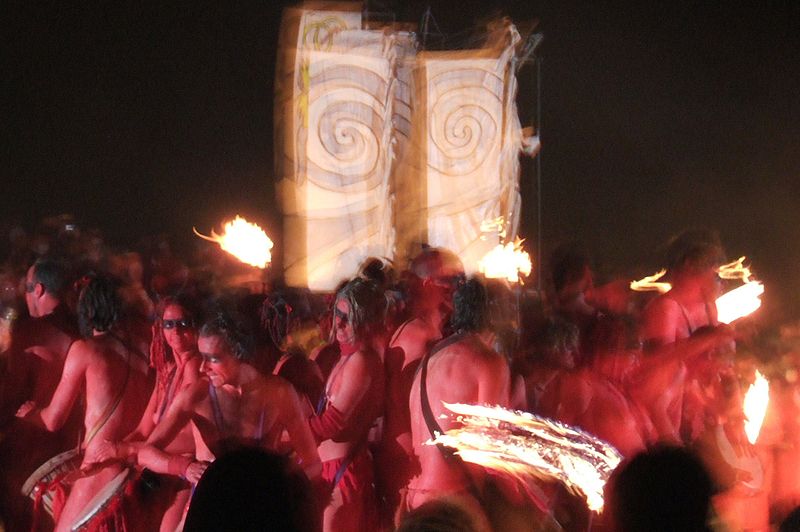The celebration of fertility
Back in the day (as in thousands of years ago), there were significantly less people on the face of the planet Earth. To these much smaller populations, scattered and disconnected from each other in many cases, the concept of fertility was the essence of life itself. More children meant that a tribe could survive and, once societies grew and became more organized, were a symbol of wealth and prosperity. As the years went by, fertility remained important, at least until recently. In out modern world, people are more concerned with developing new and better means of birth control and thus stopping births. In an overpopulated world, this is perhaps the best chance for our species to survive, but the ways of the fertility festivals that were so important to the people of old have almost completely slipped away.
Back when fertility was so important, which really isn’t that long ago, a festival to celebrate and encourage children was common in most societies. Usually held in the springtime, these served the dual purpose of acting as a means to help with the fertility of the land. Children and crops walked hand-in-hand as the most important elements for survival. These festivals often involved things that we today might consider barbaric, including acts of blood sacrifice and public mating rituals.
Since the old times, they have changed form and become other things, milder things that have little to do with fertility. Our Western celebration of Easter is a prime example of that, now being more an excuse to have fun with the family and take a day off of work. But in certain areas, the original concept of the fertility festival still remains. Sometimes these are traditional, such as among the tribal peoples of Africa, while in other places they have been mostly relegated to the position of tourist attractions.
Canton Po Fertility Festival - Africa
Along the Ivory Coast is an African tribe that celebrates what is known as the Canton Po Fertility Festival. Their celebration is a perfect example of the way many tribal groups approach the still-important subject of having lots of children and a good crop. As detailed by the site tekgnostics, the festival involves dancers wearing painted masks and outfits made of straw and animal hides. These dancers act as hosts for spirits, who visit to offer their protection over the village and to help ensure the fertility of women and the land.
Beltane Fire Festival - Scotland
Another interesting event is the Beltane Fire Festival in Edinburgh, Scotland. This is a recently revived festival, using older Celtic rites. The goal of this festival is not to promote fertility, however, but it has been organized instead as a means to educate people on the Celtic traditions that many Scots hold dear to them. To celebrate the Beltane Fire Festival, people paint themselves up and wear masks. There are dances, traditional music, fire ceremonies and a grand procession of the costumed participants. This performance is truly a remarkable site to behold, for those that manage to be in Edinburgh during Beltane.
Kanamara Matsuri
Perhaps the biggest and most popular of fertility festivals around the world (or at least the ones that still hold to their roots) is the Kanamara Matsuri in Japan. The “Festival of the Steel Phallus” has its roots in the Shinto religion, an animistic belief in which fertility takes an important role. Kanamara Matsuri has become known world-wide due to the country promoting it as a tourist attraction and, perhaps even more significantly, due to its extremely penis-centric theme.
It is held in the city of Kawasaki, on the first Sunday in April of each year. During this time, people take to the streets in a parade that makes a giant phallus the central them. Penis-shaped objects are sold everywhere, both decorative and edible. Contrary to being about sex, the festival is mainly about tradition and nowadays it even seeks to help fertility in a different way by raising money to fight the spread of AIDS.
Here’s a small video that gives you a view of how the typical Kanamara Matsuri takes place:![]() KANAMARA 2010 [かなまら祭り]
KANAMARA 2010 [かなまら祭り]
Though they’ve certainly changed over time, fertility festivals are still around, a testament to our past. They may not hold the place they once did, but many still consider them to be important parts of their lives. In a world that has shifted its concerns to having fewer children and, in many places, has no need to worry about the condition of its crops, the subject of fertility has certainly changed in context. Our past fades away as our needs alter and eventually these rites may no longer take place at all. Luckily, there are people still preserving them, despite their lack of cultural necessity, so that we who have grown up in the different world can at least see and appreciate where we came from.
Image courtesy of Calum MacUisdean
Video courtesy of Kanamara 2010 - egawauemon
